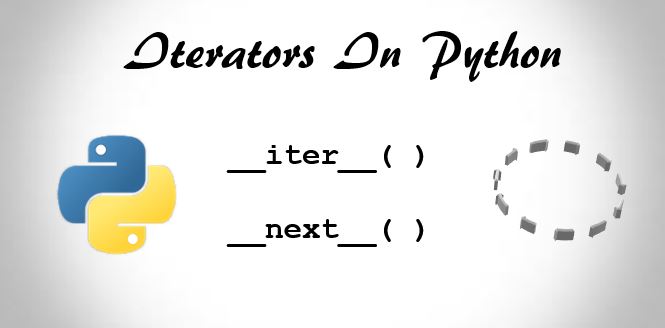Introduction:
In the world of Python, versatility reigns supreme. From web development to data science, Python’s robustness and flexibility are evident . One powerful feature that often goes overlooked is the ability to convert objects into iterators (iterator and next). In this guide, we’ll take you on a journey through the magic of Python’s __iter__() and __next__() methods. By the end, you’ll wield the power to transform any object into an iterator with finesse.
Unveiling the Magic: __iter__() and __next__()
__iter__() – The Key to Iteration
The __iter__() method is the gateway to iteration in Python. When this method is defined within a class, it allows an object to become an iterable, meaning it can be looped over using a for loop. Let’s dive into a simple example:
class MyIterator:
def __init__(self, max_limit):
self.max_limit = max_limit
self.current = 0
def __iter__(self):
return self
def __next__(self):
if self.current < self.max_limit:
result = self.current
self.current += 1
return result
else:
raise StopIteration
# Using our custom iterator
my_iterator = MyIterator(5)
for num in my_iterator:
print(num)In this example, we’ve created a custom iterator using the __iter__() and __next__() methods. The __iter__() method returns the iterator object itself, and __next__() defines the logic for iteration.
Navigating Through Iteration
The __next__() method is where the real action happens. It defines what happens when you traverse through an iterable. In our example above, __next__() checks if we’ve reached the maximum limit and raises a StopIteration exception when the limit is exceeded, signaling the end of iteration.

Real-World Applications
The power of __iter__() and __next__() extends far beyond simple number sequences. Here are some practical applications:
Custom Iterators
You can create custom iterators to navigate through complex data structures like trees, graphs, or databases, allowing you to process data efficiently.
Lazy Evaluation
Implementing iterators enables lazy evaluation, which means you only compute values as you need them. This is particularly valuable for large datasets.
Stateful Objects
Use iterators to maintain state within objects. For example, an iterator can remember the last position of an object in a sequence, making it ideal for streaming applications.
Example:
class Playlist:
def __init__(self):
self.songs = []
self.current_index = 0
def add_song(self, song):
self.songs.append(song)
def __iter__(self):
return self
def __next__(self):
if self.current_index < len(self.songs):
current_song = self.songs[self.current_index]
self.current_index += 1
return current_song
else:
raise StopIteration
# Create a playlist and add songs to it
my_playlist = Playlist()
my_playlist.add_song("Song 1")
my_playlist.add_song("Song 2")
my_playlist.add_song("Song 3")
# Iterate through the playlist using custom iterator
for song in my_playlist:
print(f"Now playing: {song}")
Best Practices for Working
- Clear Documentation: It’s crucial to provide clear and comprehensive documentation for your custom iterators. Explain the purpose of the iterator, its expected input and output, and any relevant usage details. Consider using docstrings and comments to make your code more understandable.
class MyIterator:
"""Custom iterator that generates Fibonacci numbers."""
def __init__(self, max_limit):
"""
Initialize the iterator.
Args:
max_limit (int): The maximum Fibonacci number to generate.
"""
self.max_limit = max_limit
self.current = 0
self.next_num = 1
def __iter__(self):
return self
def __next__(self):
if self.current <= self.max_limit:
result = self.current
self.current, self.next_num = self.next_num, self.current + self.next_num
return result
else:
raise StopIteration- Graceful Handling of Exceptions: When raising exceptions, provide informative messages that help users understand the issue. Additionally, consider using custom exception classes to make error handling more specific and user-friendly.
class MyIterator:
def __next__(self):
if self.current <= self.max_limit:
result = self.current
self.current, self.next_num = self.next_num, self.current + self.next_num
return result
else:
raise StopIteration("End of iteration reached.")- Iterating Once: Remember that iterators can only be iterated through once. If you need to reiterate over the same data, you should recreate the iterator object. Here’s an example of how to do this:
my_iterator = MyIterator(10)
# First iteration
for num in my_iterator:
print(num)
# Recreate the iterator for a second iteration
my_iterator = MyIterator(20)
# Second iteration
for num in my_iterator:
print(num)By following these best practices, you can create well-documented, robust custom iterators in Python, making your code more maintainable and user-friendly while ensuring smooth and predictable iteration behavior.
Conclusion
Python’s __iter__() and __next__() methods unlock a world of possibilities for object iteration and data processing. By mastering these methods, you’ll have the power to transform any object into an iterator and navigate complex data structures with ease. So, embrace the magic of __iter__() and __next__(), and elevate your Python coding to a whole new level of efficiency and versatility. Happy iterating!
Also, check out our other playlist Rasa Chatbot, Internet of things, Docker, Python Programming, MQTT, Tech News, ESP-IDF etc.
Become a member of our social family on youtube here.
Stay tuned and Happy Learning. ✌🏻😃
Happy tinkering! ❤️🔥






